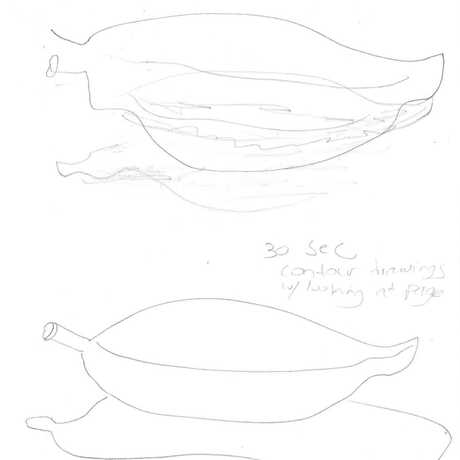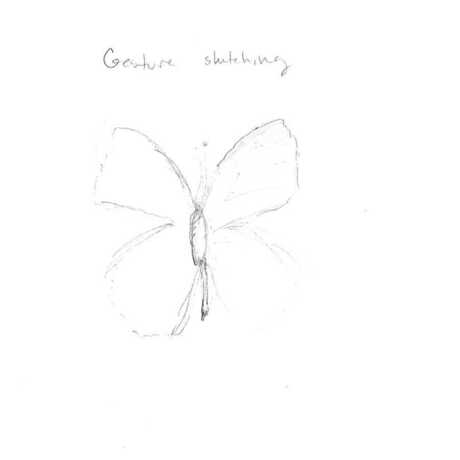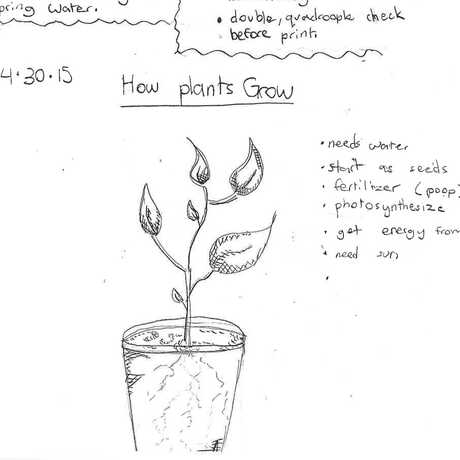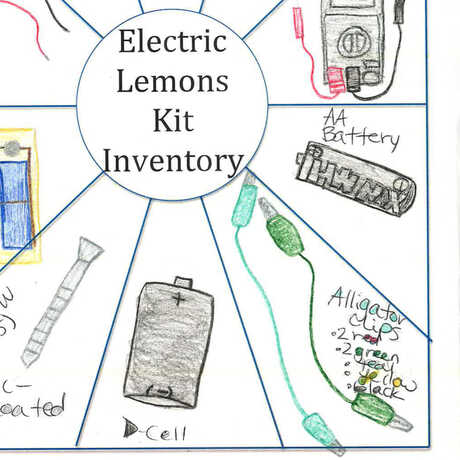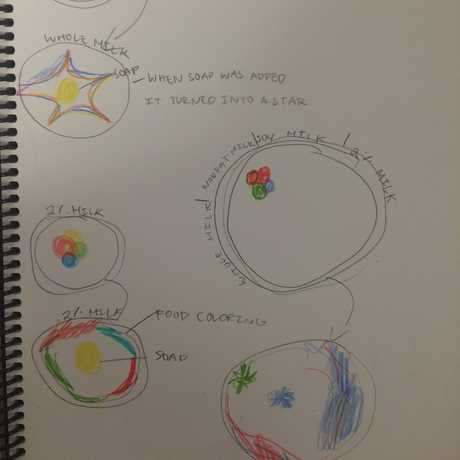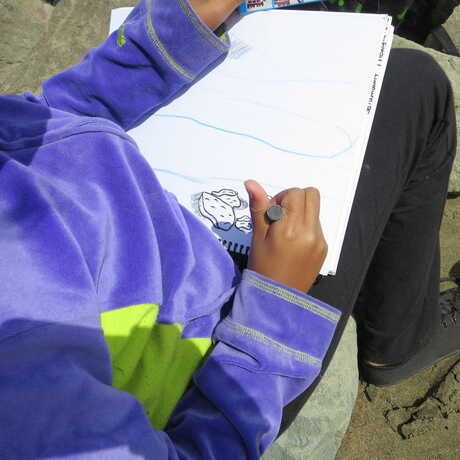
Exercise #1: Blind Contour Drawing
In this exercise, students sketch just the outline of an object. They can sketch from an image or a 3-D specimen. This exercise works especially well with skulls or pictures of animals. There are only two rules: 1) don’t look down at your paper; and 2) don’t lift your pencil off the page until you are finished. It’s hard! Students will probably laugh a lot when they see what they drew. It’s a great exercise for drawing what you actually see, as opposed to what you think is there.

